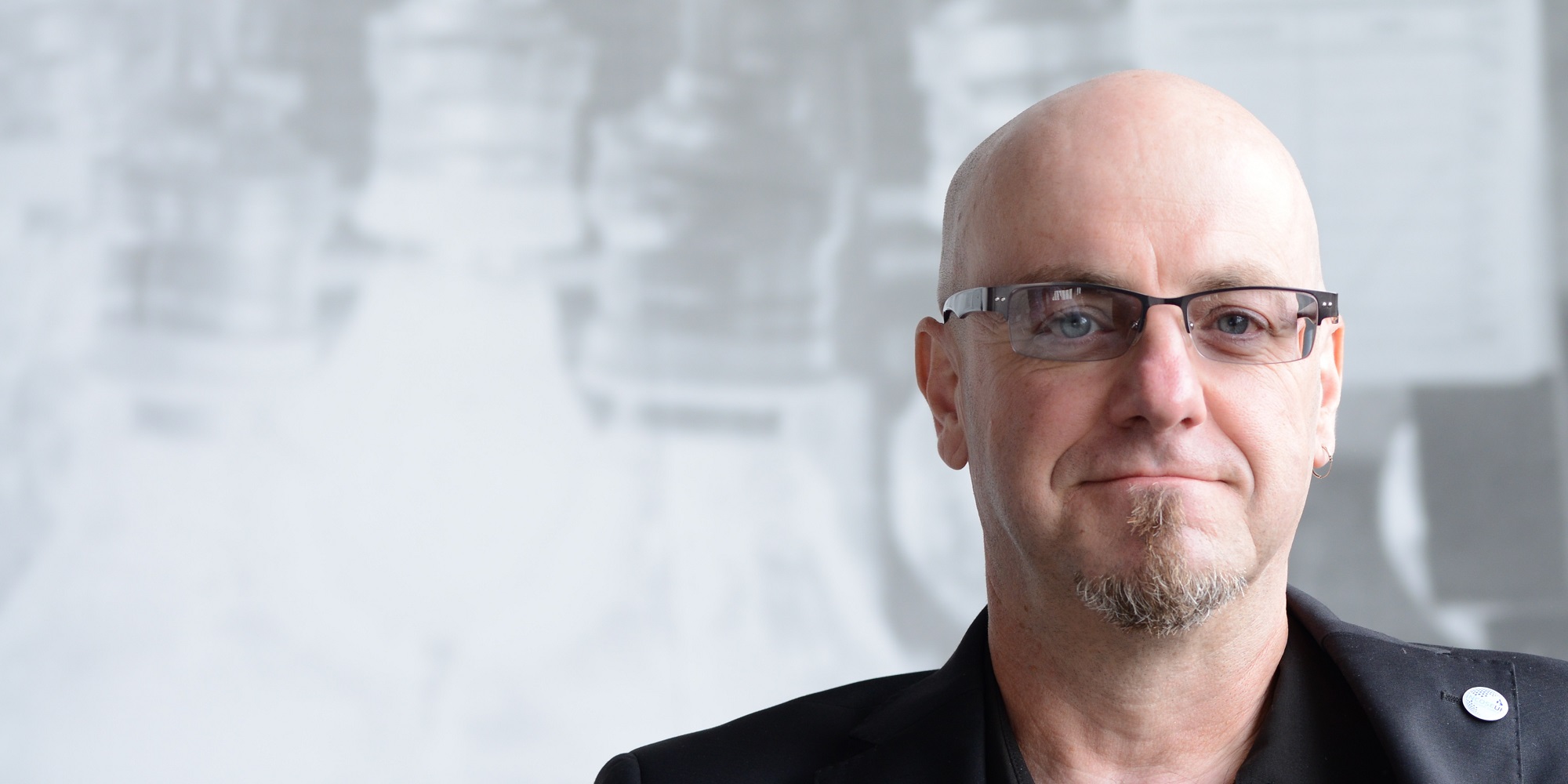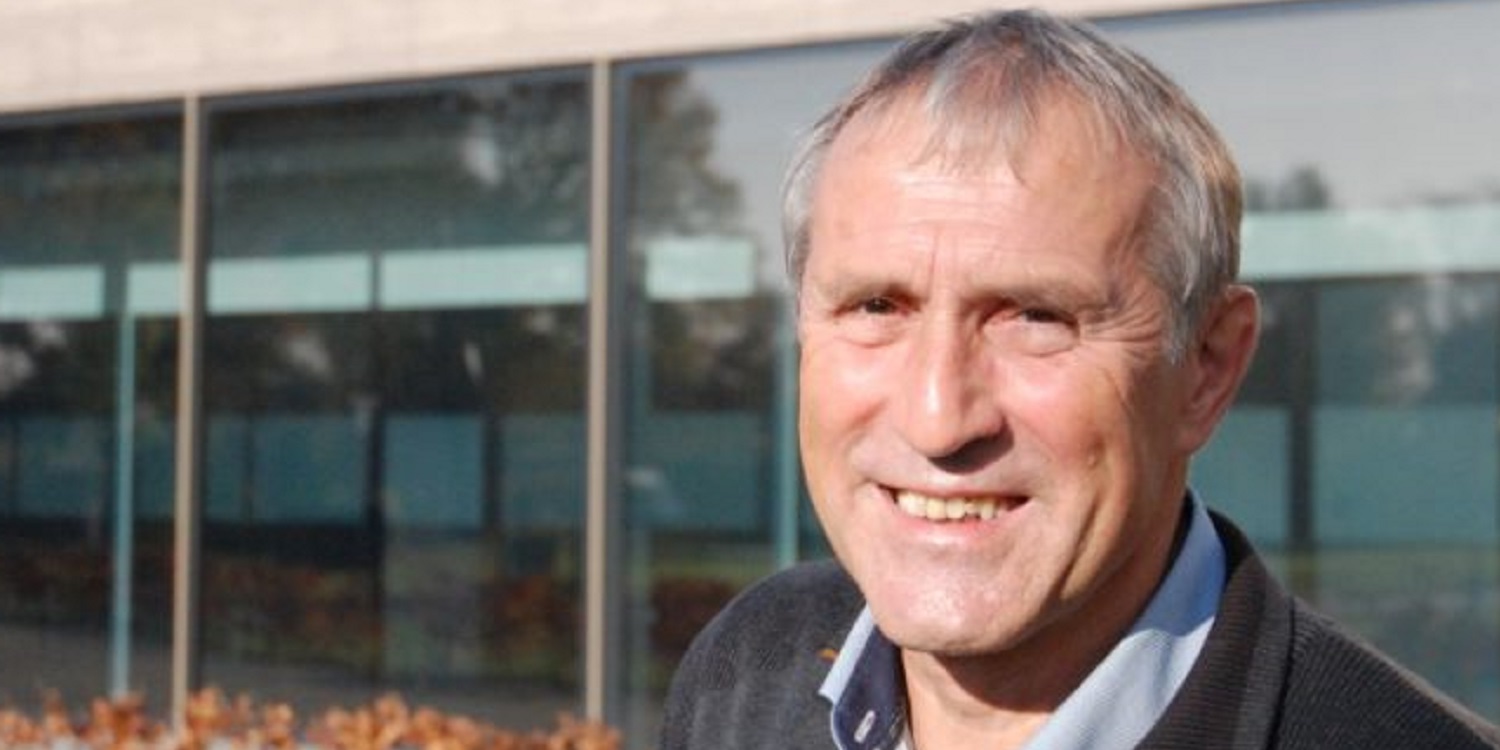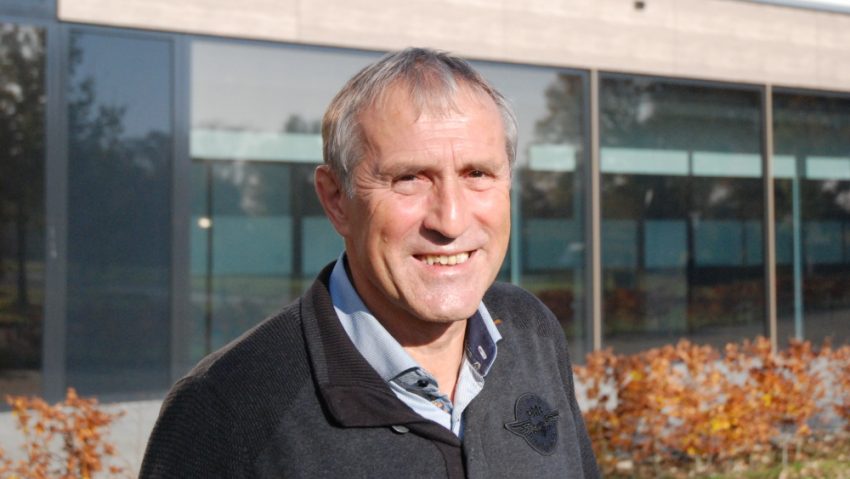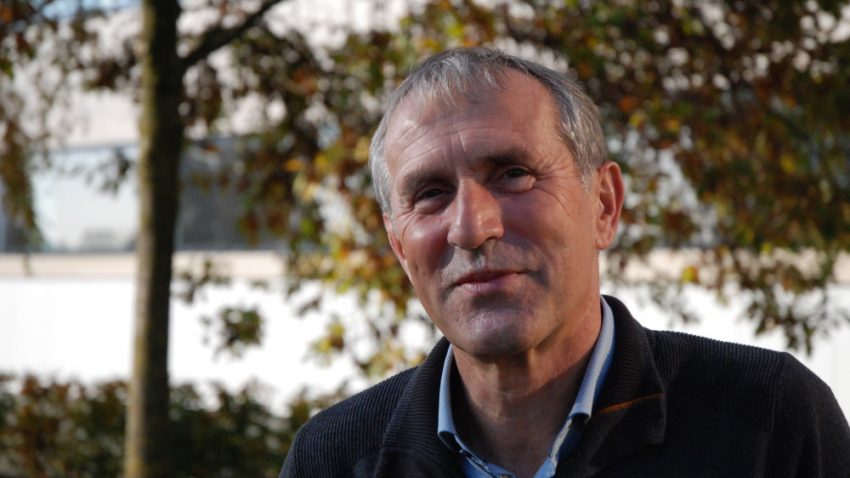Jon Holt, Incose fellow and professor of systems engineering at Cranfield University, is sharing his 30-year experience in model-based systems engineering in the MBSE training course that will be offered in collaboration with High Tech Institute. “It’s not about technology, it’s about business change in a technical environment.”
Is model-based systems engineering a hype? “MBSE isn’t just the latest great idea,” replies Jon Holt, professor of systems engineering at Cranfield University. Holt states that there’s a genuine need to improve the way the tech industry works to remain competitive. “To produce products and services that we can trust. So that the general public can have trust in us engineers. MBSE is a very good way to achieve that.”
Holt will start as a trainer for the MBSE training at High Tech Institute in the Eindhoven region. Ger Schoeber, responsible for the systems training portfolio at High Tech Institute, is happy to have him on board. “Jon was identified as one of the 25 most influential system engineers in the last 25 years by Incose, the International Council on systems engineering,” says Schoeber. “He’s internationally recognized as an expert in the field of model-based systems engineering and has authored 17 books on the subject.”
According to Holt, “MBSE isn’t really that new or radical. It’s just an evolution of classic systems engineering, just like our systems have evolved. They’re all going to be connected in some way. Almost every system is now part of a wider system of systems, which ten to twenty years ago wasn’t the case. As this complexity increases, we also need to improve the way we do things in systems engineering. To me, MBSE is a natural evolution of traditional systems engineering.”
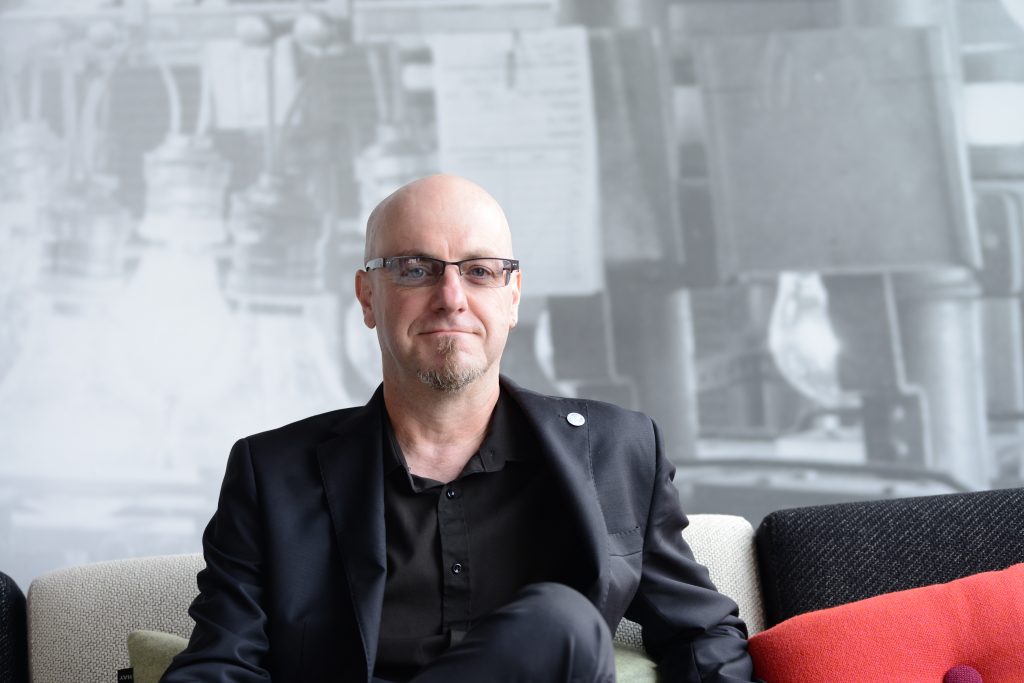
Trainer Jon Holt.
UML and SysML
In 1999, Holt started teaching how to use models in engineering for The Institution of Engineering and Technology. In his courses, he used UML (Unified Modellng Language) that was aimed at the software industry – SysML (System Modeling Language) didn’t exist yet. The main aim of the training was to try and convince people that modeling was a good idea. “Only about fifteen years ago, modeling became more widely accepted in engineering. The question changed from why should we model to how should we model? What are the techniques we need? How do we model effectively and efficiently?”
About five years ago, Holt experienced another transition. “Modeling became widely accepted and used in industry. The main question now is: how do we successfully implement model-based systems engineering in our business? How do we deploy it? Initially, many people just saw it as the latest buzzwords, but now, as our systems become more complex, there’s a genuine need to do this.”
How can companies benefit from MBSE?
“It really depends on what it is you want to achieve. Some people want to shorten their development timelines. Some want to improve the product quality or their communication. Some people want to improve their relationships with customers, suppliers and the tendering process. For some organizations, it comes down to things like compliance. In markets like medical devices, the main concern is compliance with regulations and standards. Different organizations have a different emphasis. It really depends on your business goals.”
“You have to bear in mind that you’re talking about business change. For that, you need to understand what your key stakeholder expectations are and what success looks like. What are the problems that you have at the moment? What are the benefits that you’re looking to achieve? You need to know if MBSE makes a difference for you. Would you have been equally successful without it?”
If MBSE means business change, where do you start if you want to implement it?
“It all starts with having a very clear picture of what you’re setting out to achieve. What’s your current position in systems engineering and what’s your goal? Where do you want to be? It’s like any business change. In the first place, you have to know why you want to do it.”
“The emphasis of your company is a good starting point for the transition you want to achieve. This will be different for producers of medical devices than for semiconductor equipment manufacturers.”
What’s the biggest pitfall?
“One of the biggest pitfalls is that people just go out and start to buy technologies and solutions. They’re essentially buying solutions to a problem that they don’t understand. That’s never going to be a particularly good outcome.”
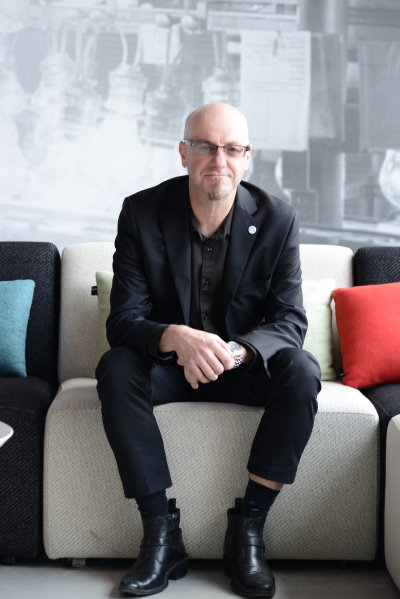
How does the implementation of MBSE typically evolve?
“You need to start small and grow it out into the business. It’s about evolution. You start on a small part of a project or maybe a pilot project to demonstrate the benefits of the improvements. And then you can grow that out into the rest of the business.”
“Your speed obviously does depend on the level of investment, but also very important are commitments from the people in the organization. As a crude measure, the more senior buy-in you can get, the smoother it goes. This will often mean that you get key stakeholders involved and show them what the benefits are.”
Joining the course isn’t enough. Your employer and team also h ave to be committed?
“Absolutely. You need to have a strategy in place and that strategy needs to have a timeline. You need to be aware of the time, effort and money that you need to invest. Depending on your original goals, you can realize the benefits very quickly. Sometimes it might take a year, but in many cases, you can win back any investment you make in the first project or the first implementation.”
“You have to be realistic. This isn’t an overnight activity. It’s an evolution from where you are now to where you want to be. Anticipating your expected goals and also how you’re going to demonstrate that you’ve met those goals. You need to know what success looks like, so you need to know how to measure that. It’s about the road to get there.”
Five stages
Holt identifies five stages on the road to full model-based systems engineering. “We have a scale of five maturity levels. It’s a path from working with documents, improving the way people work with the help of models, to full model-based systems engineering. Depending on the organization and the investment, it takes four to six months to get halfway to level three. That’s when you’re actually applying models properly. That’s also when you start to see immediate and measurable improvements.”
It might take eighteen months to two years to get to full automation with tooling and advanced applications, Holt reckons. “But at that stage, you’ll be able to see patterns roll out across the business and so on. It’s an evolution. You can consider each stage as a checkpoint to see if you’ve succeeded.”
The starting point for a transition to MBSE is understanding what you want to achieve. “For that, organizations have to look at the big picture and prioritize the effort they want to put in to get the optimum benefits,” says Holt. To get there, he guides people through five main aspects of MBSE in his course. “It allows them to focus on the aspects that are of most interest to them. They might have quite a lot of experience in some of the areas but typically not in all of them.”
The first area is the system. “At the end of the day, the goal of model-based systems engineering isn’t to produce a model, it’s to realize a system successfully. The way to do that is by collecting all of the relevant, all of the necessary information into the model. The system and the model are our day job if you like. That’s what we’re working on.”
Alongside that, the information needs to be visualized. “We need this to be able to communicate with different stakeholders. So this is where things like notations come in – SysML, UML, mathematical notations, whatever.”
Tooling has to be considered as well. That’s the third aspect. “Obviously, tools are needed to implement MBSE.”
The fourth area is the approach. This is where people usually lack experience. “Historically, when we talk about defining an approach for systems engineering, it’s been about defining processes. This is still absolutely crucial. But we have to separate the information that we produce and consume in our processes from the steps that we must take to execute the process. This is where the framework comes in, as the framework gives us the blueprint for the model and the model is our single source of truth for the information. So when we talk about the approach, it’s a combination of the processes we need to execute and the information we produce and consume – this is what we refer to as the framework.”
The fifth and final area is compliance. “What standards do you need to comply with? What legislation? What are your certification requirements? For aerospace, automotive and rail, certification is crucial. If we can’t certify our systems as being safe, secure and reliable, we can’t run them.”
All these five areas combined will result in model-based systems engineering. They’ll give organizations the power to maximize their techniques and practices. The starting point will differ from organization to organization. Some might be strong in tools or compliance, but not so strong in the approach. “We look at these five areas from their current position and their goals. That gives us the main input for understanding where you are on the evolutionary MBSE scale and what would be the best strategy to implement MBSE.”
Not every organization has to reach the full model-based maturity level. “Going fully model-based isn’t for everybody. But that doesn’t mean there aren’t benefits to reaching the ‘model-enhanced’ or ‘model-centric’ stage. It’s about understanding what your benefits are. What do you actually need and where should you possibly spend our money on? It’s a mistake to invest too quickly in frameworks, standards, tools and notations. You should know why in the first place. Unfortunately, the classic situation still exists where people start spending hundreds of thousands of euros on tools and solutions for problems they don’t understand. Companies buy tools, give them to the engineers and assume that everything will work from that point on. That’s not going to lead to optimal benefits. You first have to understand your problems. It’s a transition. It’s traveling down that road and having the checkpoints along the way.”
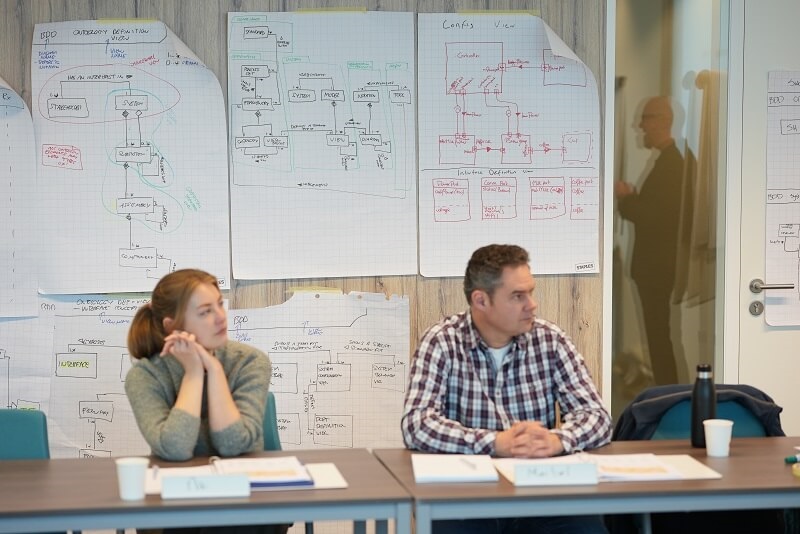
Training setting with Jon’s flipchart notes on the wall.
If commitment from higher management is so important, would you say the course also benefits higher management?
“Absolutely. We see all sorts of different people getting involved with the training. Obviously, system engineers and more traditional disciplines like electrical engineers, mechanical engineers, software and so on. But also a lot of managers, even at the very senior levels, and people who don’t consider themselves as engineers like scientists, mathematicians and psychologists. We also have one-day courses aimed more at management or senior people. We intend to also schedule them with High Tech Institute in the future.”
“Not every aspect of MBSE is going to be beneficial to everyone involved. By knowing what you understand, you’re able to focus. If consistency of information is a big problem, you probably need to look at your framework. If people are more mature in their way of working, sometimes it comes down to improving the way they’re using their tools or their notations.”
Do participants need to have a technical background?
“It helps, but we don’t assume any prior knowledge. We start with the absolute basics, give real-life examples and then look at the problems we have. Then we move on to examples.”
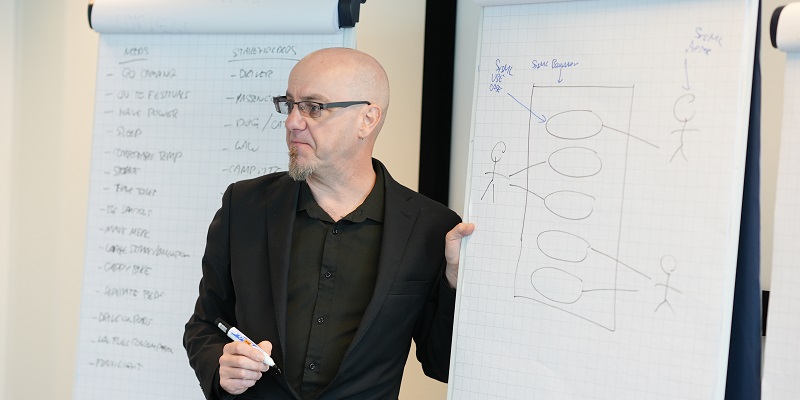
Jon Holt during one of his MBSE trainings.
What do participants take home?
“You can’t expect to go on a three-day training course and be an expert in the field. But you will have a very strong awareness of what it’s all about, what’s in it for you and where you can go next. If you want to pursue MBSE, you’ll know what the next steps are.”
“We also show different applications, how you can get different benefits and different value from applying different aspects of the modeling. Because it’s not just about products or systems. You can also use MBSE to improve your processes, your projects, your lifecycles and all the different aspects of it.”
“At the end of the course, people will be in a position to say: ‘Actually, I think I can benefit from MBSE in these areas.’ It will give them a direction on where to go next. In many cases, they want to improve their business and therefore want to improve their products or services, for example, which they then go on to develop.”
“People get a very clear understanding of MBSE from the training, but they will also explore how they can apply it in different situations. From the basics of modeling to things like interfaces, requirements modeling and understanding business change.”
“Participants aren’t going home as world experts, but they will have an understanding of MBSE and see what the benefits are for them. They’ll know where to go next.”
You can sort out a lot about MBSE yourself by reading books and search the internet. But joining Jon Holt’s three-day course will save you months of research and give you a head start. He has spent thirty years of his career putting MBSE in practice. One of the big advantages of the training course is being face to face with him. You can ask direct questions about MBSE in your industry. You’ll get all the answers. His training is intended to be as interactive as possible. He doesn’t just do a lecture in front of the class, he’s delivering an interactive experience and gets everybody involved – a relatively quick way to learn the basics.
Holt brings up some other benefits: “What’s interesting is that you get to see other people from other industries. You get the appreciation that you’re not alone. These other people have a similar problem. Industries might differ, but the problems are similar. Sharing different experiences can be very, very powerful. More than once, you’ll realize: oh, I’m doing nothing wrong; other people are in the same situation.”
“In every course, I get lots of questions I’ve heard before, but there’s always a few I’ve never heard in all my thirty years of MBSE. For me, that’s part of the joy of delivering the courses. It challenges me as well, and it makes sure that I stay on top of my game. That’s exciting, and of course, I shouldn’t be standing at the front if I can’t answer unexpected questions.”
This article is written by René Raaijmakers, tech editor of Bits&Chips.
